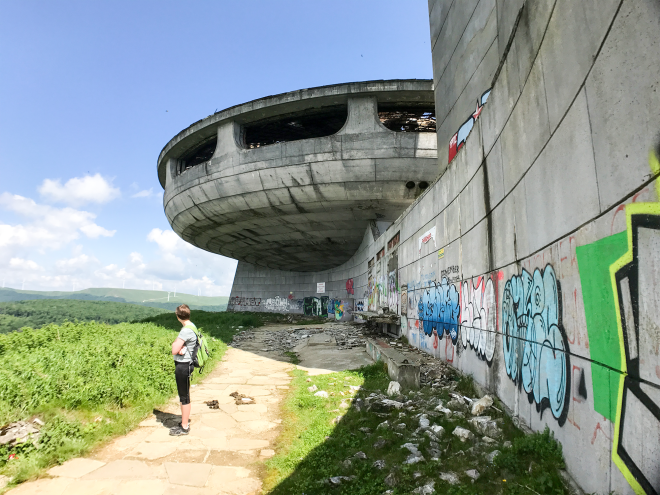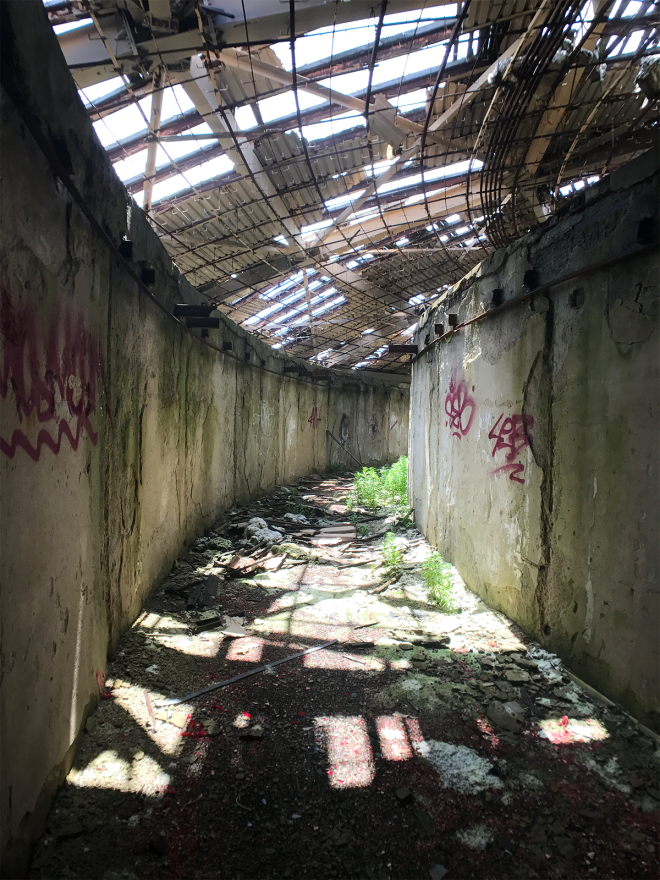“Our world, like a charnel-house, lies strewn with the detritus of dead epochs.”
– Le Corubiser, The City of Tomorrow
A silhouette of concrete rises up before the summer sky. Winds sweep through the mountainous grasslands and the sun and elements beat down over the decades, yet here stands a monument out of time. The Buzludzha feels like history itself melted down and reformed into concrete and steel rebar.
The Buzludzha Monument was built to commemorate the foundation of socialism in Bulgaria and to serve as the headquarters of the Bulgarian Communist Party. After the fall of the communist government in Bulgaria, the structure has been left to decay.
I was overjoyed to see the monument- I’d gotten pretty sick back in the nearby town of Veliko Tarnovo over the last few days and had been afraid I wouldn’t be able to make it. Fortunately I felt good enough that morning to crawl out of the hostel, so we rented a car and ventured out onto the Bulgarian highways. The monument was built far away from any populated areas in a mountain pass, so we had to navigate through some obscure backroads to get there. We thought we were getting lost when we turned a corner, and then all of a sudden there it was- a massive concrete UFO saucer.
The hands of some forgotten giant.
We’d heard claims back in town that the police had won a long-running game of cat-and-mouse with urban explorers at the Buzludzha, finally managing to seal off the last of the entrances. Fortunately this turned out to be quite untrue! We slid through a crack in the concrete and lowered ourselves into the depths of the structure.
After climbing a few meters underground, we put our feet down in a room that looks like it was once a big storage closet. There’s a deathly silence about the place. Climbing into the foundations of this cavernous building feels like entering a crypt- tomb robbers in the graveyard of utopia.
The bowels of the building are cluttered with electrical panels and ventilation shafts. The pictures didn’t come out very well, but if you’d like you can see them here and here. Like a lot of the Buzludzha, the basement looks like the decaying remnants of some science-fiction starship, halfway between a forgotten past and an unrealized future.
We slowly navigate our way through this metal labyrinth and find staircases climbing up the structure. Eventually, we ascend into the main room.
As we emerge from the dark underground sections into the main room, we’re bathed in light and kaleidoscopic color. The beams of light fall like they’re cutting through jungle canopy, glittering off spectacular murals composed of tens of thousands of individual 1×1 cm glass squares. Everywhere you hear the sound of water dripping and then echoing throughout the huge space.
“Proletarians of all countries, unite!”

The place space feels (maybe by design or maybe not) sacred, like you’re inside a cathedral. A temple for a now-vanished god, a mausoleum for dead ideologies, a modern mecca for urban explorers.
We follow passages out of the main room and find huge banks of windows, looking out on the surrounding mountains and valleys.
The Buzludzha is probably the most otherworldly place I’ve ever been in my life. This monolith is one of those things that simply doesn’t seem like it’s from our reality, a location lost in space and definitely in time. It makes me incredibly sad to see this place falling apart, but at the same time I can’t imagine it looking any more beautiful than it does in decay.
We spend a few more hours exploring this fantastic fever dream of metal and concrete, soaking in the atmosphere before heading back down the pass and continuing our journey.































